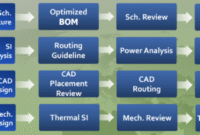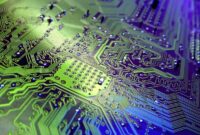Key Factors That Influence Hardware Buying Decisions are crucial for anyone looking to make informed choices in today’s tech-driven world. As technology continues to evolve at a rapid pace, understanding what drives hardware purchases can help consumers, businesses, and tech enthusiasts alike navigate through an overwhelming array of options. From performance to price, various elements play a pivotal role in shaping these decisions.
Factors such as brand reputation, user reviews, compatibility with existing systems, and warranty offerings are all key considerations that can significantly sway purchasing choices. By delving into these aspects, we can better comprehend the landscape of hardware buying behaviors and the implications for both buyers and sellers.
In the ever-evolving landscape of technology, the internet of things (IoT) has emerged as a significant player, shaping how we interact with the world around us. The IoT refers to the interconnected network of devices that communicate and exchange data with one another over the internet. This technology has not only streamlined personal activities but has also transformed industries, enhancing efficiency and productivity in numerous sectors.
The concept of IoT is not entirely new; however, its rapid adoption and integration into daily life have been remarkable over the past decade. Smart home devices, wearable technology, and industrial automation are just a few examples of how IoT has made significant strides. These devices collect data, analyze it, and use it to improve functionality, leading to smarter decision-making and increased convenience.
One of the most notable areas where IoT has made a significant impact is in smart homes. With devices like smart thermostats, lighting systems, and security cameras, homeowners can control their environment remotely. These systems often come with applications that allow users to monitor energy usage, adjust settings, and receive alerts. For example, a smart thermostat can learn a household’s routines and adjust heating and cooling accordingly, resulting in cost savings and increased comfort.
Wearable technology is another area that has seen enormous growth due to IoT. Fitness trackers and smartwatches have become commonplace, providing users with real-time data about their health and activity levels. These devices can monitor heart rates, track sleep patterns, and even provide reminders to stay active. The data collected is invaluable for users looking to improve their health, and it can also be shared with healthcare providers for better medical insights.
Beyond personal use, IoT is revolutionizing various industries. In manufacturing, IoT devices are used for predictive maintenance, which reduces downtime and increases productivity. Sensors placed on machinery can monitor performance and send alerts when maintenance is needed, preventing costly breakdowns. This kind of insight can lead to significant cost savings over time and enhances the overall efficiency of operations.
In agriculture, IoT technology has enabled farmers to monitor crops and livestock more effectively. Sensors can provide real-time data on soil moisture levels, weather conditions, and even pest activity. This information allows farmers to make informed decisions about irrigation, fertilization, and pest control, ultimately leading to increased yields and reduced waste.
Transportation is another sector that has been transformed by IoT. Fleet management systems use IoT devices for tracking vehicle locations, monitoring fuel consumption, and analyzing driver behavior. This data can help companies improve logistics, reduce costs, and enhance safety. Additionally, advancements in connected vehicles, where cars communicate with each other and infrastructure, promise to improve road safety and reduce traffic congestion.
While the benefits of IoT are undeniable, there are also challenges and concerns that need to be addressed. One significant issue is security. As more devices become connected to the internet, the potential for cyberattacks increases. Protecting sensitive data is paramount, and manufacturers must prioritize security measures in the design of their IoT devices. Consumers also need to be aware of the privacy implications of using IoT technology, ensuring they understand how their data is collected and used.
Moreover, the interoperability of devices poses a challenge for the widespread adoption of IoT. With countless manufacturers creating devices that may not communicate effectively with one another, users can find themselves frustrated by a lack of seamless integration. Standardization efforts are underway to address this challenge, but it is still a work in progress.
As we look to the future, the potential for IoT continues to expand. Emerging technologies such as artificial intelligence (AI) and machine learning are being integrated with IoT, enabling more intelligent systems that can learn and adapt over time. This synergy promises to create even more sophisticated applications, from smart cities that optimize resource usage to advanced healthcare systems that provide personalized treatments.
In conclusion, the internet of things represents a significant shift in how we interact with technology and our environment. From enhancing our daily lives through smart home devices to transforming industries with increased efficiency, IoT is poised to continue shaping our future. While challenges exist, the ongoing innovation and collaboration among manufacturers, developers, and consumers will pave the way for a more connected, efficient, and intelligent world.
In conclusion, examining the Key Factors That Influence Hardware Buying Decisions reveals the complexity and significance behind each choice consumers make. A thoughtful approach to understanding these factors not only empowers buyers but also helps manufacturers align their products with market demands. As technology continues to advance, staying informed about these influencing elements will remain essential for making smart hardware investments.
Commonly Asked Questions: Key Factors That Influence Hardware Buying Decisions
What is the most important factor in hardware buying?
The most important factor often varies by individual, but performance and reliability typically rank high among consumer priorities.
How does brand reputation influence buying decisions?
Brand reputation can significantly affect consumer trust and perceived product quality, leading many buyers to prefer established brands.
Are user reviews reliable for making hardware decisions?
User reviews can provide valuable insights, but it’s essential to consider the overall consensus rather than relying on a single review.

What role does price play in hardware purchases?
Price is a critical factor; buyers often seek a balance between quality and affordability, which can influence their final decision.
How important is warranty when buying hardware?
A warranty gives buyers peace of mind, making it an important aspect to consider, especially for high-value purchases.



